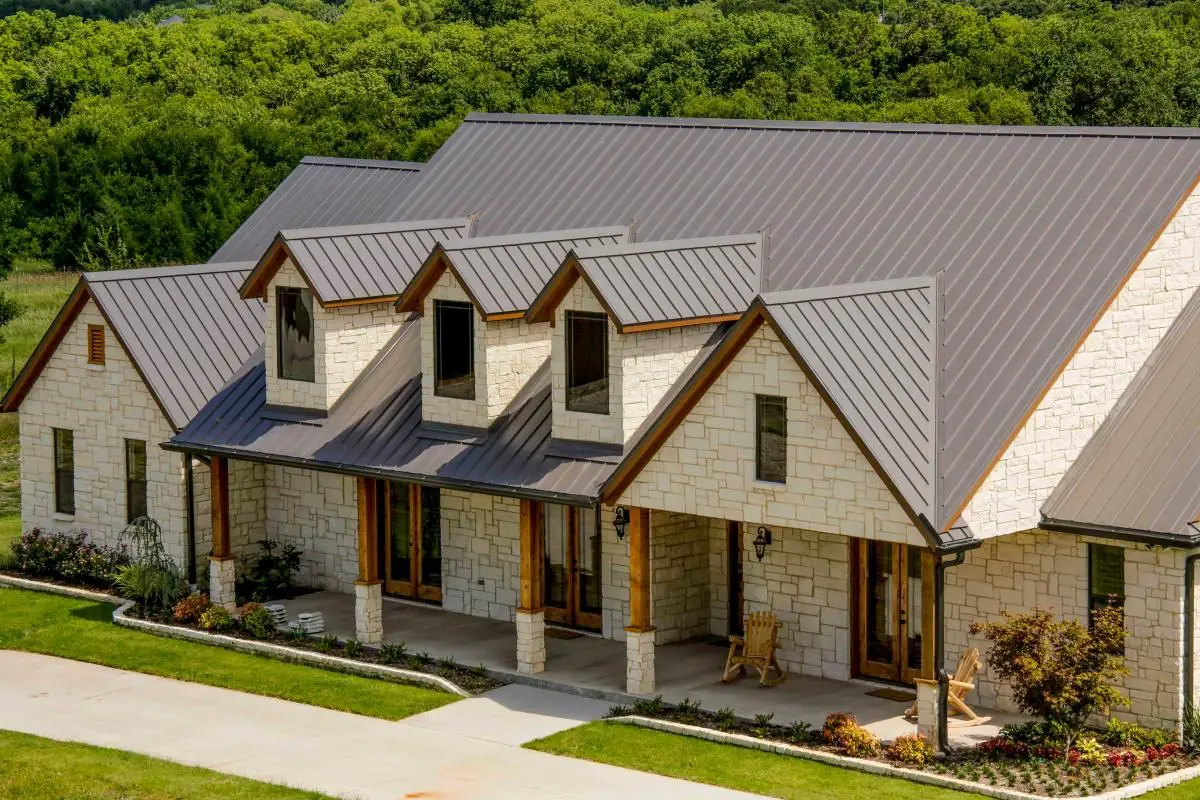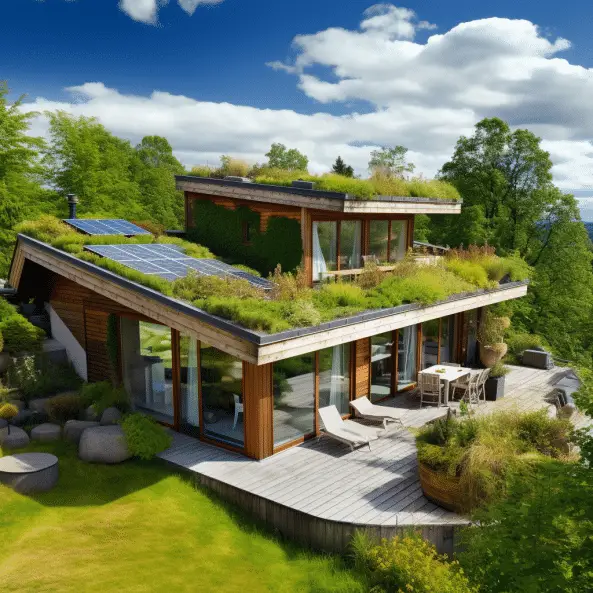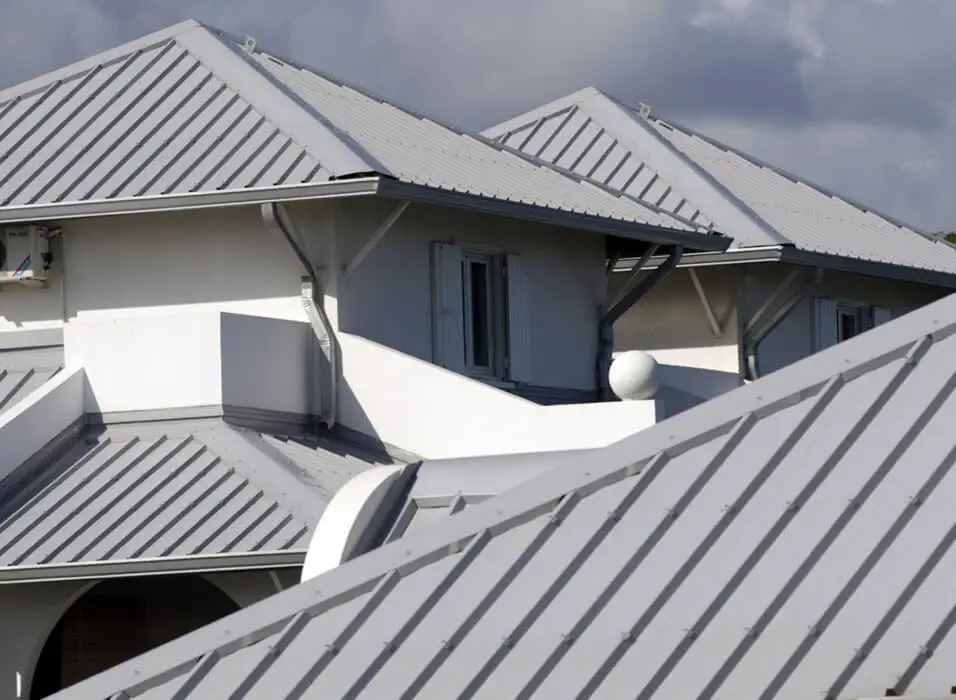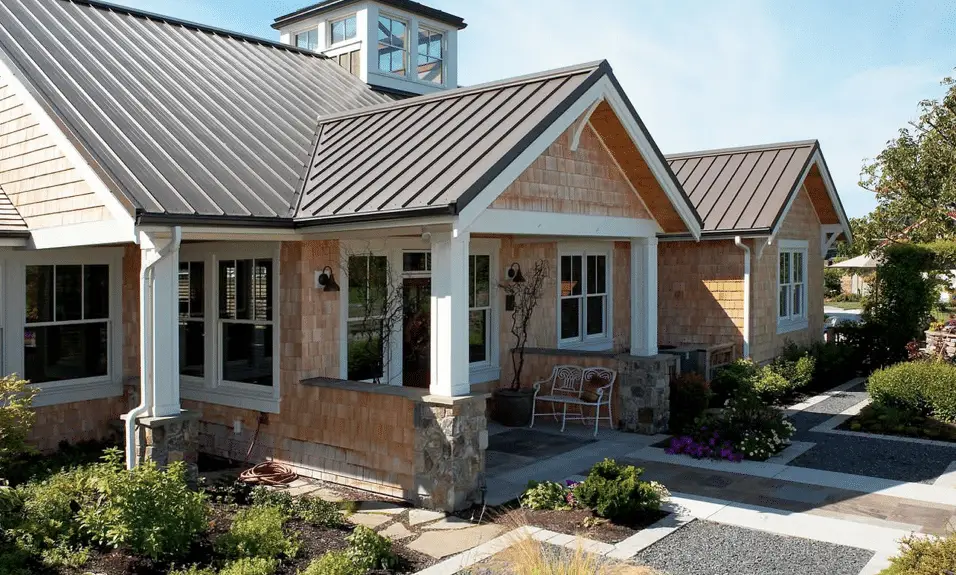How Long Does Metal Roof Last
Introduction
How Long Does Metal Roof Last: Metal roofs have gained significant popularity in recent years due to their durability, energy efficiency, and aesthetic appeal. Homeowners and commercial property owners alike are increasingly opting for metal roofs as a long-term investment. However, before making a decision, it is crucial to understand the lifespan of a metal roof and how it compares to other roofing materials.
A metal roof is known for its exceptional longevity, surpassing many other roofing options. On average, a well-maintained metal roof can last anywhere between 40 to 70 years. This lifespan is significantly longer than traditional asphalt shingles, which typically last around 20 to 30 years. The extended lifespan of a metal roof can be attributed to its inherent durability and resistance to various environmental factors.
Several factors contribute to the longevity of a metal roof. Firstly, the type of metal used plays a crucial role. Common metals used for roofing include steel, aluminum, and copper. Steel is the most widely used due to its affordability and strength. Aluminum is known for its lightweight nature and resistance to corrosion, making it an excellent choice for coastal areas. Copper, on the other hand, is highly durable and offers a unique aesthetic appeal.
Another significant factor that affects the lifespan of a metal roof is the environment in which it is installed. Metal roofs are highly resistant to extreme weather conditions such as heavy rain, snow, and high winds. However, exposure to harsh elements over time can cause wear and tear. Regular maintenance, such as cleaning debris and inspecting for any damage, is essential to ensure the longevity of a metal roof. Additionally, proper installation by experienced professionals is crucial to avoid any potential issues that may arise in the future.
Metal roofs offer a remarkable lifespan compared to other roofing materials. With proper maintenance and installation, a metal roof can last anywhere between 40 to 70 years. The choice of metal, environmental factors, and regular upkeep all play a significant role in determining the longevity of a metal roof. Investing in a metal roof not only provides long-term durability but also adds value and aesthetic appeal to any property.
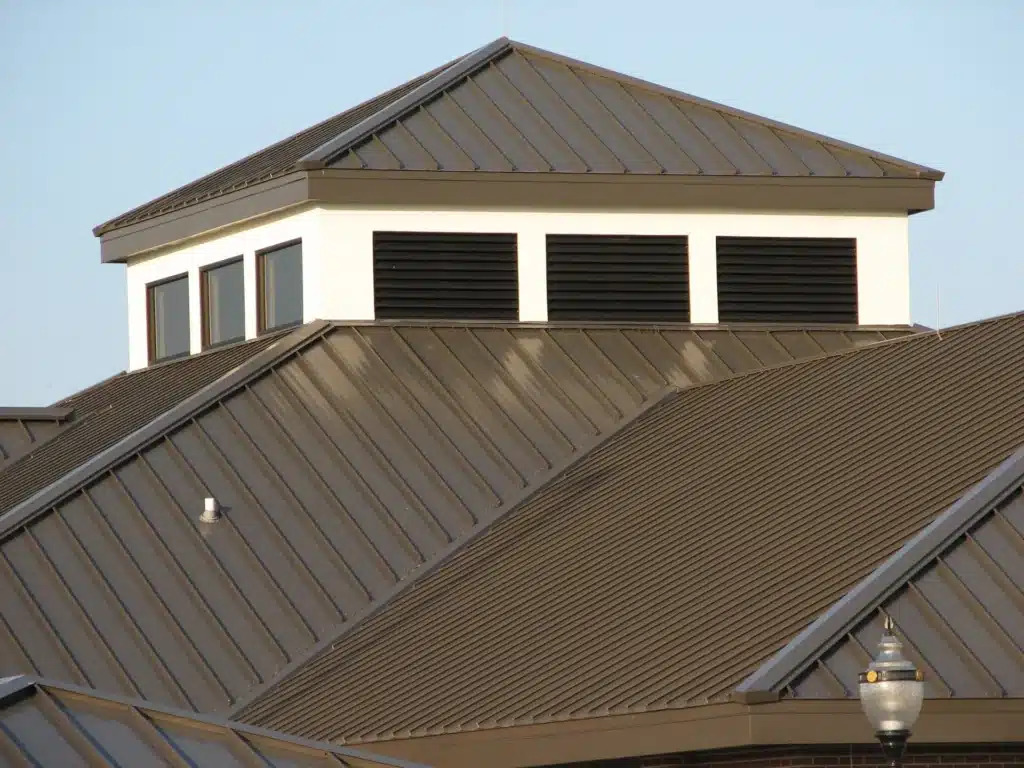
Do metal roofs rust over time?
So, do steel roofs rust? The short and sweet answer is yes. Steel rusts, especially when exposed to weather conditions over a long period of time.
Introduction:
Metal roofs have gained popularity in recent years due to their durability and longevity. Homeowners are often concerned about the potential for rusting over time, as metal is commonly associated with corrosion. In this article, we will explore whether metal roofs rust over time and discuss the factors that can influence their susceptibility to rust.
Factors Affecting Rust:
While metal roofs are generally resistant to rust, certain factors can contribute to their corrosion over time. One of the primary factors is the type of metal used in the roof’s construction. Different metals have varying levels of resistance to rust. For example, galvanized steel is coated with a layer of zinc, which provides excellent protection against rust. Aluminum, on the other hand, naturally forms a protective oxide layer that prevents corrosion. Therefore, the choice of metal can significantly impact the roof’s susceptibility to rust.
Maintenance and Care:
Proper maintenance and care play a crucial role in preventing rust on metal roofs. Regular inspections should be conducted to identify any signs of damage or wear. Any loose or damaged coatings should be repaired promptly to prevent moisture from reaching the metal surface. Additionally, keeping the roof clean and free from debris, such as leaves or branches, can help prevent the accumulation of moisture and reduce the risk of rust formation.
Climate and Environmental Factors:
The climate and environmental conditions in which a metal roof is installed can also impact its susceptibility to rust. Areas with high humidity or frequent exposure to saltwater, such as coastal regions, pose a higher risk of rust formation. In such environments, it is essential to choose a metal with superior corrosion resistance and consider additional protective coatings or treatments to enhance the roof’s durability.
While metal roofs can rust over time, their susceptibility to corrosion depends on various factors. The type of metal used, regular maintenance and care, as well as the climate and environmental conditions, all play a significant role in determining the longevity of a metal roof. By selecting the appropriate metal, conducting regular inspections, and taking necessary preventive measures, homeowners can ensure that their metal roofs remain rust-free and continue to provide reliable protection for many years to come.
What’s the longest lasting metal roof?
Copper. As the longest-lasting metal roofing, copper is typically expected to last 100 years. Depending on the maintenance and weather conditions, some copper roofs may even last up to 200 years. Over time, copper roofing systems develop a verdigris patina that protects the metal from moisture, rust, and corrosion.
Introduction:
A metal roof is a durable and long-lasting roofing option that offers numerous benefits over traditional roofing materials. When it comes to longevity, there are several factors to consider, including the type of metal used, the quality of installation, and the maintenance practices followed. In this article, we will explore the different types of metal roofs and identify the longest lasting metal roof option available.
Types of Metal Roofs:
There are various types of metal roofs available in the market, including steel, aluminum, copper, and zinc. Each metal has its unique properties and advantages. Steel is the most commonly used metal for roofing due to its affordability and strength. Aluminum is lightweight and resistant to corrosion, making it an excellent choice for coastal areas. Copper is known for its aesthetic appeal and durability, while zinc offers exceptional resistance to corrosion and requires minimal maintenance.
Factors Affecting Longevity:
Several factors contribute to the longevity of a metal roof. The quality of installation plays a crucial role in ensuring the roof’s durability. Proper installation techniques, such as using the correct fasteners and ensuring adequate ventilation, can significantly extend the lifespan of a metal roof. Additionally, regular maintenance, such as removing debris and inspecting for any signs of damage, is essential to prevent minor issues from turning into major problems.
The Longest Lasting Metal Roof:
While all metal roofs offer excellent durability, copper and zinc roofs are considered to be the longest lasting options. Copper roofs have been known to last for centuries, with some historical buildings showcasing their beauty and functionality even after hundreds of years. Copper is highly resistant to corrosion, making it ideal for harsh weather conditions. Similarly, zinc roofs have a lifespan of 100 years or more, thanks to their self-healing properties. Zinc naturally forms a protective layer called patina, which helps prevent corrosion and extends the roof’s lifespan.
When it comes to the longest lasting metal roof, copper and zinc are the top choices. However, it is important to note that proper installation and regular maintenance are crucial for maximizing the lifespan of any metal roof. By investing in a high-quality metal roof and following recommended maintenance practices, homeowners can enjoy the benefits of a durable and long-lasting roofing solution.
What is the average life expectancy of a metal roof?
40-70 years
Metal roofs can last 40-70 years, depending on the material. Traditional asphalt roofing materials have an estimated life expectancy of roughly 12-20 years.
Average Life Expectancy of a Metal Roof
A metal roof is a durable and long-lasting roofing option that has gained popularity in recent years. It offers numerous benefits such as energy efficiency, low maintenance, and resistance to fire, wind, and hail. One of the key factors that homeowners consider when choosing a roofing material is its average life expectancy. Understanding the average life expectancy of a metal roof is crucial for making an informed decision about whether it is the right choice for your home.
Factors Affecting Life Expectancy
The average life expectancy of a metal roof can vary depending on several factors. Firstly, the type of metal used plays a significant role. Common metals used for roofing include steel, aluminum, and copper. Steel roofs typically have a life expectancy of 30 to 50 years, while aluminum roofs can last up to 50 years or more. Copper roofs, known for their exceptional durability, can have a life expectancy of over 100 years.
Maintenance and Care
The longevity of a metal roof also depends on the level of maintenance and care it receives. Regular inspections and maintenance can help identify and address any issues before they escalate. Cleaning the roof to remove debris, leaves, and other materials that can accumulate over time is essential to prevent moisture buildup and potential damage. Additionally, ensuring proper ventilation and insulation can contribute to extending the life of a metal roof.
Climate and Environmental Factors
The climate and environmental conditions in which a metal roof is installed can impact its life expectancy. Metal roofs are highly resistant to extreme weather conditions, including heavy rain, snow, and high winds. However, exposure to harsh elements over an extended period can gradually deteriorate the roof’s protective coating and affect its longevity. Therefore, it is important to consider the local climate and environmental factors when estimating the average life expectancy of a metal roof.
The average life expectancy of a metal roof can range from 30 to over 100 years, depending on various factors such as the type of metal used, maintenance and care, and climate conditions. Investing in a metal roof can provide homeowners with a durable and long-lasting roofing solution that offers numerous benefits. However, it is essential to consider these factors and consult with roofing professionals to determine the most suitable metal roofing option for your specific needs and location.
How often should you recoat a metal roof?
Recoating Adds ProtectionAcrylic and oil-based paints can be recoated every two to four years. Elastomeric systems only need to be recoated every five to ten years. How often you coat is often up to the weather and moisture that you experience yearly.
Introduction:
A metal roof is a durable and long-lasting option for homeowners. However, like any other roofing material, it requires regular maintenance to ensure its longevity and performance. One crucial aspect of maintaining a metal roof is recoating it periodically. Recoating involves applying a new protective layer to the roof’s surface, which helps to enhance its durability and extend its lifespan. In this article, we will discuss how often you should recoat a metal roof and the factors that influence this frequency.
Factors influencing recoating frequency:
The frequency at which you should recoat a metal roof depends on various factors, including the type of coating used, the climate in your area, and the condition of the roof. Different types of coatings have different lifespans, and manufacturers usually provide guidelines on when to recoat. Additionally, the climate plays a significant role in determining the wear and tear on the roof. Areas with extreme weather conditions, such as high temperatures, heavy rainfall, or frequent hailstorms, may require more frequent recoating.
Benefits of regular recoating:
Regularly recoating a metal roof offers several benefits. Firstly, it helps to protect the roof from corrosion and rust, which can occur due to exposure to moisture and harsh weather conditions. The coating acts as a barrier, preventing water from seeping into the metal and causing damage. Secondly, recoating enhances the roof’s resistance to UV rays, which can cause fading and deterioration of the paint. The coating reflects the sun’s rays, reducing heat absorption and keeping the roof cooler. This, in turn, helps to improve energy efficiency and reduce cooling costs.
Recommended recoating frequency:
While the specific recoating frequency may vary depending on the factors mentioned earlier, a general guideline is to recoat a metal roof every 5-10 years. However, it is essential to inspect the roof regularly and look for signs of wear and tear. If you notice any areas where the coating is peeling, cracking, or showing signs of damage, it is advisable to recoat those sections promptly. Regular inspections and maintenance can help identify potential issues early on and prevent more extensive damage to the roof.
Recoating a metal roof is an essential part of its maintenance to ensure its longevity and performance. The frequency of recoating depends on factors such as the type of coating, climate, and roof condition. Regular recoating offers benefits such as protection against corrosion, UV rays, and improved energy efficiency. While a general guideline is to recoat every 5-10 years, it is crucial to inspect the roof regularly and address any signs of damage promptly. By following these recommendations, homeowners can keep their metal roofs in optimal condition for years to come.
How do you keep a metal roof from rusting?
Galvanizing the roof with zinc will extend its longevity. The metal remains protected under the coat of zinc, and it strengthens the roof from weather like snow, hail, and excessive heat. These are some of the ways you can avoid rust on a metal roof. It’s also important to have the right supplies and tools.
Introduction:
A metal roof is a durable and long-lasting option for homeowners. However, over time, it can be susceptible to rusting due to exposure to moisture and other environmental factors. To ensure the longevity and aesthetic appeal of a metal roof, it is essential to take preventive measures to prevent rust formation. This article will provide valuable insights and tips on how to keep a metal roof from rusting.
Understanding the Causes of Rust:
Rust is a common problem that occurs when iron or steel reacts with oxygen and moisture in the air. Metal roofs are particularly vulnerable to rusting due to their constant exposure to the elements. Rain, snow, and humidity can all contribute to the formation of rust on a metal roof. Additionally, factors such as poor installation, lack of maintenance, and the presence of corrosive substances can accelerate the rusting process.
Regular Inspection and Maintenance:
One of the most effective ways to prevent rust on a metal roof is to conduct regular inspections and maintenance. Inspect the roof for any signs of damage, such as loose or missing screws, cracks, or areas with peeling paint. These areas are more prone to rust formation and should be addressed promptly. Additionally, clean the roof regularly to remove any debris, leaves, or branches that can trap moisture and promote rusting.
Apply Protective Coatings:
Applying protective coatings to a metal roof can significantly enhance its resistance to rust. There are various types of coatings available in the market, such as acrylic, epoxy, or polyurethane coatings. These coatings act as a barrier between the metal surface and the environment, preventing moisture and oxygen from reaching the metal. Before applying any coating, ensure that the roof is clean and free from rust or corrosion. Follow the manufacturer’s instructions for proper application and reapplication intervals.
Ensure Proper Ventilation:
Adequate ventilation is crucial for preventing rust on a metal roof. Poor ventilation can lead to the accumulation of moisture, which can accelerate rust formation. Ensure that the attic or roof space is properly ventilated to allow for the escape of moisture-laden air. This can be achieved by installing vents or exhaust fans. Additionally, consider using insulation materials that have moisture-wicking properties to further reduce the risk of rusting.
Preventing rust on a metal roof requires regular inspection, maintenance, and the implementation of protective measures. By understanding the causes of rust, conducting routine inspections, applying protective coatings, and ensuring proper ventilation, homeowners can effectively keep their metal roofs rust-free. Taking these preventive measures will not only extend the lifespan of the roof but also maintain its aesthetic appeal for years to come.
A metal roof is known for its exceptional longevity, often lasting two to three times longer than traditional roofing materials such as asphalt shingles. On average, a well-maintained metal roof can have a lifespan of 40 to 70 years or even more, depending on various factors.
The longevity of a metal roof can be attributed to its durability and resistance to common issues that plague other roofing materials. Metal roofs are highly resistant to rot, insect damage, and mildew, which can significantly extend their lifespan. Additionally, metal roofs are designed to withstand harsh weather conditions, including heavy rain, snow, and high winds, further contributing to their longevity.
However, it is important to note that the lifespan of a metal roof can be influenced by factors such as the quality of installation, the type of metal used, and the level of maintenance. Proper installation by experienced professionals and regular inspections can help identify and address any potential issues, ensuring the maximum lifespan of a metal roof.
Are there any factors that can affect the longevity of a metal roof?
There are several factors that can significantly impact the longevity of a metal roof. One of the most crucial factors is the quality of the installation. A properly installed metal roof by experienced professionals can ensure its durability and longevity. Additionally, the type and quality of the metal used in the roof can also affect its lifespan. High-quality metals such as aluminum or steel with protective coatings tend to have a longer lifespan compared to lower-quality materials.
Another factor that can influence the longevity of a metal roof is the climate and weather conditions in the area. Metal roofs are generally highly resistant to extreme weather conditions such as heavy rain, snow, and hail. However, exposure to constant moisture or corrosive environments can lead to rust and deterioration over time. Regular maintenance and inspections can help identify and address any issues before they become major problems.
Furthermore, proper ventilation and insulation play a crucial role in the lifespan of a metal roof. Adequate ventilation helps prevent moisture buildup and reduces the risk of condensation, which can cause damage to the roof structure. Insulation helps regulate temperature and minimize thermal stress on the metal roof, which can extend its lifespan.
How does the durability of a metal roof compare to other roofing materials?
When it comes to durability, metal roofs are known for their exceptional strength and longevity compared to other roofing materials. Metal roofs are designed to withstand various weather conditions, including heavy rain, snow, hail, and high winds. Their durability is attributed to the materials used, such as steel or aluminum, which are highly resistant to corrosion and can effectively protect against moisture damage.
Unlike traditional roofing materials like asphalt shingles or wood, metal roofs do not rot, crack, or warp over time. This makes them highly durable and less prone to damage caused by pests, such as termites. Additionally, metal roofs have a high fire resistance rating, providing an extra layer of protection for your home.
Furthermore, the durability of metal roofs extends to their long lifespan. On average, a metal roof can last anywhere between 40 to 70 years, depending on the specific type of metal and proper maintenance. This lifespan surpasses that of many other roofing materials, making metal roofs a cost-effective choice in the long run.
Can a metal roof withstand extreme weather conditions?
Yes, a metal roof is highly durable and can withstand extreme weather conditions. Metal roofs are designed to be resistant to various weather elements such as heavy rain, strong winds, hailstorms, and even snow. The durability of a metal roof is attributed to its strong and sturdy construction, which allows it to withstand the impact of harsh weather conditions.
One of the key factors that contribute to the ability of a metal roof to withstand extreme weather is its interlocking panel system. This system ensures that the roof panels are securely fastened together, creating a strong and watertight barrier against rain and wind. Additionally, metal roofs are often coated with protective finishes that enhance their resistance to corrosion, UV rays, and other weather-related damages.
Furthermore, metal roofs have a high strength-to-weight ratio, making them less prone to damage from heavy snow loads or falling debris during storms. They are also fire-resistant, which adds an extra layer of protection in areas prone to wildfires or lightning strikes. Overall, a properly installed and maintained metal roof can provide long-lasting protection and peace of mind, even in the face of extreme weather conditions.
Are there any maintenance requirements to ensure the longevity of a metal roof?
Metal roofs are known for their exceptional durability and longevity, but like any other roofing material, they do require some maintenance to ensure their longevity. By following a few simple maintenance practices, you can significantly extend the lifespan of your metal roof.
Regular inspections are crucial for identifying any potential issues before they become major problems. Inspect your metal roof at least once or twice a year, especially after severe weather events. Look for signs of damage, such as loose or missing screws, dents, or scratches. Additionally, check for any debris buildup, such as leaves or branches, as they can trap moisture and cause corrosion.
Cleaning your metal roof is another important maintenance task. Remove any debris, dirt, or moss that may have accumulated on the surface. Use a soft-bristle brush or a low-pressure power washer to avoid damaging the roof’s protective coating. Regular cleaning not only enhances the appearance of your roof but also prevents the buildup of moisture, which can lead to rust or other forms of corrosion.
Applying protective coatings can further enhance the longevity of your metal roof. These coatings act as a barrier against UV rays, moisture, and other environmental factors that can cause damage. Consult with a professional roofer to determine the most suitable coating for your specific metal roof type and climate conditions.
While metal roofs are highly durable, proper maintenance is essential to ensure their longevity. Regular inspections, cleaning, and the application of protective coatings are key practices to keep your metal roof in optimal condition for many years to come.
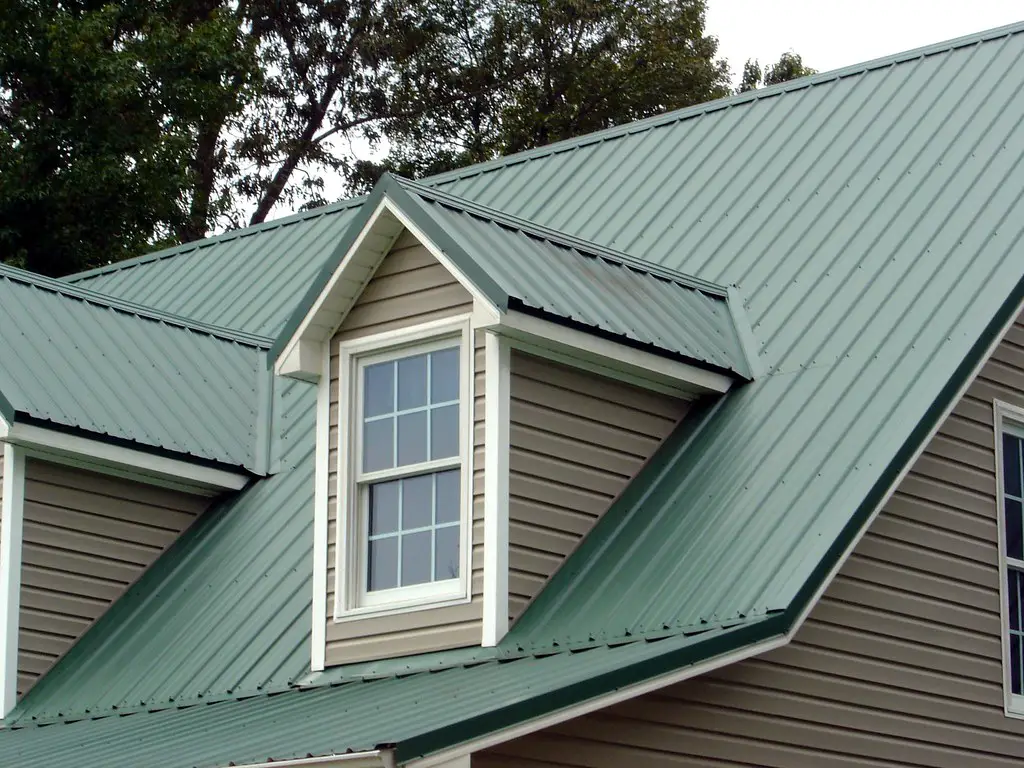
Conclusion
A metal roof is a durable and long-lasting roofing option that offers numerous benefits to homeowners. When it comes to the question of how long a metal roof can last, the answer is quite impressive. On average, a metal roof can last anywhere between 40 to 70 years, depending on various factors such as the type of metal used, the quality of installation, and the level of maintenance provided.
One of the key factors that contribute to the longevity of a metal roof is the material itself. Metal roofs are typically made from materials such as steel, aluminum, or copper, all of which are known for their exceptional durability. These materials are resistant to common roofing issues such as rot, insect damage, and cracking, which can significantly extend the lifespan of the roof.
Furthermore, the quality of installation plays a crucial role in determining how long a metal roof will last. It is essential to hire a professional roofing contractor who has experience in installing metal roofs last to ensure that the installation is done correctly. Proper installation techniques, such as using the right fasteners and ensuring adequate ventilation, can prevent issues such as leaks and premature deterioration, ultimately increasing the lifespan of the roof.
Maintenance also plays a vital role in maximizing the lifespan of a metal roof. While metal roofs are relatively low-maintenance compared to other roofing materials, regular inspections and maintenance are still necessary. Clearing debris, checking for loose or damaged panels, and addressing any issues promptly can help prevent minor problems from escalating and ensure that the roof remains in optimal condition for many years.
A metal roof is an excellent investment for homeowners looking for a long-lasting roofing solution. With an average lifespan of 40 to 70 years, depending on various factors, a metal roof offers durability, resistance to common roofing issues, and low maintenance requirements. By choosing high-quality materials, hiring a professional contractor for installation, and providing regular maintenance, homeowners can ensure that their metal roof will last for decades, providing reliable protection and peace of mind.



